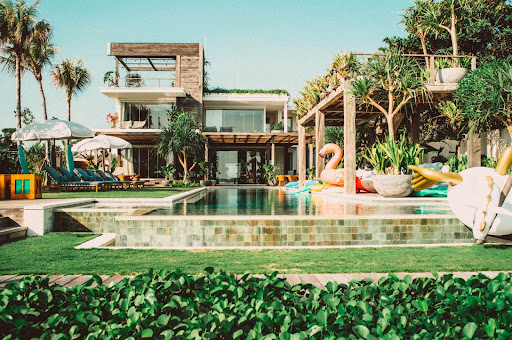There is no denying that homes have always been an important pillar in people’s lives. Our home is where many of us eat most meals and sleep most nights, where we go to unwind and relax, where we come together with loved ones.
And although these structures have always been the backbone of many households, our lives have never been as home-centered as they are today in this post-pandemic era.
We used to be constantly on the go, barely home. But the last two years have changed that. We had to find new ways to interact, and every solution has focalized around the home. In turn, this has reshaped the way we work, exercise, entertain; how we live!
From being more intentional about the use of spaces in our homes to being more appreciative of private spaces, the outdoor, and colorful and textural contrasts, here are six ways that the pandemic has shaped home trends.

-
Greater mindfulness of spaces
All this time spent at home these last few years has awoken a newfound appreciation for every last bit of space in our houses. As people are increasingly wanting to maximize the square footage of their homes, they are also granting more thought and intention into their living spaces. Underutilized areas such as a spare bedroom, a second living room or the basement, are being repurposed to better serve the modern needs of families.
According to interior designer Max Humphrey, home gyms have become a popular option for people who wish to remain active from the comfort of their homes and progress in their fitness journey through online and on-demand fitness programs. Likewise, designer Linda Hayslett shared that home libraries are also gaining traction, as it offers a break from the online space where many now spend their entire days.
-
Deeper appreciation for private spaces
While it may be over exaggerated to go as far as to say that open floor concepts are completely gone, there certainly has been a shift in customers’ perception and appreciation of private spaces. Having spent months over months confined to a shared singular dwelling with family members, significant others or roommates, the need for some privacy and quiet spaces has never been more pronounced.
As people have realized this, the layout and structure of homes are beginning to move away from open floor plans, and toward a more fractionate set of rooms dedicated to specific functions.
-
Ever growing need for home offices
Perhaps the most evident structural change to date, the rising popularity of home offices has been unmatched. Prompted by the shift of the work culture to the online space and employers’ vast adoption of the work from home or hybrid work model, an allocated office space in the home has become a required necessity for many households.
Another widely adopted trend relating to the home office–but at the aesthetic level instead of structural–has been the clutterless and minimalistic background design catered for Zoom meetings. People are embellishing their offices with pleasant and calm-evoking paintings, and drawing from a regained appreciation for biophilic design to enhance their workspace with greenery.
-
Extending the home into the outdoors
If, pre-pandemic, backyards were being pushed to a back corner of the mind, they are officially second thought no more. An attentively arranged outdoor space has moved up in people’s priority list following the extensive period spent restricted to our homes. The growing importance of having some outdoor space is even more evident when we look at the housing market during the pandemic: the sale and purchase of houses was buzzing as opposed to the condo and apartment business which was plummeting.
People want to make more out of their backyards than a simple resting area for some tables and chairs. They now see their backyards as an extension of their homes and are treating them as such with the addition of bigger decks, firepits, televisions, , and so on. The regained appreciation for biophilic design extends to this trend as people are feeling a certain longing to retrieve their connection with the natural world.

-
Bolder colors
The post-pandemic trends are not exclusive to spaces, for there’s been movement in people’s taste of color palettes.
According to color marketing manager Dee Schlotter, colors become favored and in demand when they reflect consumer attitudes. Having spent many draining and dull months, people are dying for some vibrancy in their lives. In turn, lively colors and patterns are back in full force!
Schlotter, along with other designers, anticipates an emphasis on natural color palettes that evoke nature and tranquility, such as warm beiges, browns, blues and greens. “These colors promote internal peace in an age where mental and physical well-being are critical,” said Schlotter.
-
Additional textures
As people are finding themselves wanting more out of their homes, texture is expected to be further utilized at an architectural level. In fact, while textural effects have often mostly been drawn from rugs and furniture, interior designer Joshua Smith said tongue and groove boards on the ceiling are rising in demand for their ability to create an earthy character. People are also turning to curtains and lighting to intentionally add texture to their houses.
As we progress forward in this post-pandemic era, new trends are solidifying to match people’s latest attitudes and preferences. At Widler Architecture, we keep up to date with the current trends and we are committed to helping you attain your new needs and priorities for your home.
